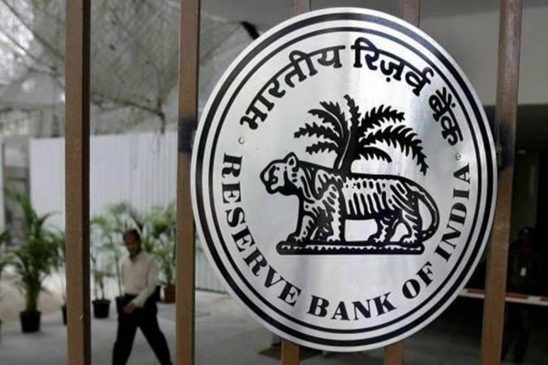THE SURPLUS available with the Reserve Bank of India for transfer or the RBI dividend to the Union government is likely to remain low in the current financial year ending March 2023 because of higher expenditure incurred by the central bank due to rising interest rates and higher costs in managing surplus liquidity in the system.
While the RBI transferred a lower surplus of Rs 30,307 crore in FY2022 (Rs 99,126 crore in FY2021) to the government, the lowest in 10 years, the surplus this financial year is also likely to be on the lower side. The lower dividend could be due to higher interest paymeznts to banks which parked their surplus liquidity in the reverse repo window.
Also Read– National Startup Day 2023: Check significance and TOP quotes from popular business leaders
Under reverse repo, the RBI borrows from banks, while under the repo window, RBI lends to banks. The reverse repo rate is 3.35 per cent and the repo rate is 6.25 per cent.
The RBI did not respond to questions mailed to it by The Indian Express.
Further, mark-to-market losses on account of a fall in bond prices across the world are likely to impact the income of the central bank. The rupee too depreciated by over 10 per cent in the last 12 months. The RBI can bank on the Contingency Fund which was at Rs 3,10,986.94 crore as of March 2022 in the case of any emergency requirement. The central bank can tap the Currency and Gold Revaluation Account (CGRA) to manage the exchange and gold valuation losses.
The RBI had deployed as much as US $ 361.8 billion in foreign securities as of September 2022.
Higher dividend transfer by the RBI, especially since 2018-19, had offered some relief to the government as it tackled an economic slowdown even before the pandemic spread its tentacles. Based on the Bimal Jalan committee, which looked into the RBI’s economic capital framework (ECF), the central bank transferred an all-time high amount of Rs 1.76 lakh crore to the government in 2018-19 (July-June).Explained
Also Read– Budget 2023: New and old income tax regimes; which one to choose?
Why RBI income may be lower
Several aspects affect the quantum of surplus generated by the RBI. One is the interest rate the central bank has to pay when banks park their funds with the RBI. Two, rupee depreciation against dollar. Three, as bond prices dropped with rising yields, RBI had to provide for mark-to-market losses.
The RBI normally pays the dividend from the surplus income it earns on investments and valuation changes on its dollar holdings and the fees it gets from printing currency, among others. The rupee depreciation against the dollar in recent months is also likely to weigh on the surplus transfer.
In the Investment Revaluation Account-Foreign Securities (IRA-FS), the foreign dated securities are marked-to market on the last business day of each week ending Friday and the last business day of each month and the unrealised gains or losses are transferred to the IRAFS.
The balance in IRA-FS decreased from Rs 8,853.67 crore as on March 31, 2021 to (-) Rs 94,249.54 crore as on March 31, 2022 because of increase in yields across the maturities for all major markets. However, this loss was adjusted against the Contingency Fund and the balance in IRA-FS was nil as of March 2022. Bond yields had risen further since then in most overseas markets with the 10-year US bond yield rising by 185 basis points to 3.59 per cent in the last 12-month period. When the yield goes up, the prices of the bond drop, leading to a loss in mark-to-market holdings.
The balance in Investment Revaluation Account–Rupee Securities (IRA-RS) decreased from Rs 56,723.79 crore as on March 31, 2021 to Rs 18,577.81 crore as on March 31, 2022, due to net impact of hardening of yields across the yield curve leading to mark-to market losses and booking of unrealised gain into realised gain on sale of rupee securities. India’s 10-year bond yield is now at 7.32 per cent.
Currency and Gold Revaluation Account (CGRA) provides a buffer against exchange rate/ gold price fluctuations. It can come under pressure if there is an appreciation of the rupee vis-à-vis major currencies or a fall in the price of gold. When CGRA is not sufficient to fully meet exchange losses, it is replenished from the CF.
Also Read– India’s Wholesale Price Inflation Falls To Almost 2-Year Low At 4.95%
During 2021- 22, the balance in CGRA increased from Rs 8,58,877.53 crore as on March 31, 2021 to Rs 9,13,389.29 crore as on March 31, 2022 mainly due to depreciation of rupee and rise in the international price of gold.
“We don’t, however, expect it (the surplus) to be negative as the central bank has a lot of flexibility in managing its accounts. The surplus should be somewhere near to the last year’s level,” said Madan Sabnavis, Chief Economist, Bank of Baroda. “There was surplus liquidity of around Rs 6-7 lakh crore in the system till recently. Though the RBI’s expenditure has gone up, they can easily manage it,” he said.





































